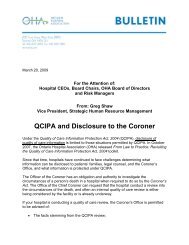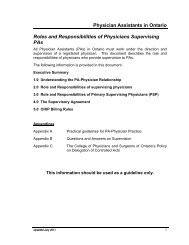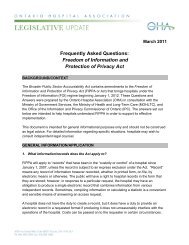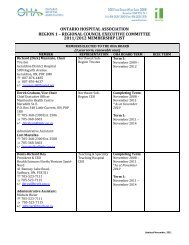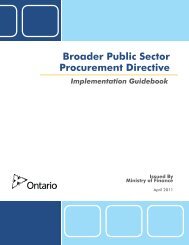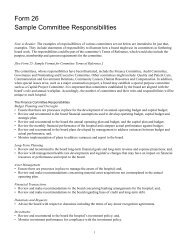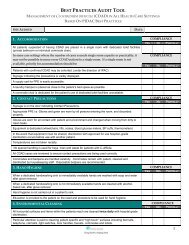The Relationship Between Employee Engagement and Human ...
The Relationship Between Employee Engagement and Human ...
The Relationship Between Employee Engagement and Human ...
- No tags were found...
Create successful ePaper yourself
Turn your PDF publications into a flip-book with our unique Google optimized e-Paper software.
Because we are interested in linking EES <strong>and</strong> administrative data at the department level, werecalculated response rates using the more granular HR data for those departments included in the EES-HR metrics comparisons. Full details of these calculations are provided for Hospital A <strong>and</strong> Hospital C inAppendices 1 <strong>and</strong> 2 respectively. <strong>The</strong> second row in Figure 5, above, summarizes the response ratesusing total EES responses divided by total headcount from administrative data, for departments onwhich there is complete data available. Hospital C’s two response rate calculations are similar. <strong>The</strong>discrepancy in the two Hospital B response rates is because Hospital B used a sample for the EES, notthe entire population of employees. When total headcount is used as the denominator, this reduces theEES response rate. Hospital A’s response rate discrepancy results from the fact that there are fewer“headcounts” in the administrative data than the total number of EES questionnaires sent out (150versus 187) – a discrepancy for which there is no ready explanation.It also is instructive to briefly observe the departmental variations in response rates presented forHospitals A <strong>and</strong> C in Appendices 1 <strong>and</strong> 2. For example, among the 16 departments at Hospital Cresponse rates vary between 27% <strong>and</strong> 70%. As already noted, this may affect the accuracy ofdepartment—level analysis of EES data in departments with below-average response rates.Accuracy of administrative dataA further consideration is the accuracy of the HR metrics. While testing the quality of the HRadministrative data collected by hospitals is beyond the scope of this project, it is possible that errors orinconsistencies in data coding, data entry, or other features of the HRIS being used could impact thequality of the HR metrics overall. That said, that is a st<strong>and</strong>ard concern <strong>and</strong> potential problem with anyadministrative data.Missing or inconsistently collected data for HR metrics affects the accuracy of the indicator, <strong>and</strong>therefore the accuracy of any comparisons with engagement scores. In this regard, the issues identifiedin the three hospitals participating in this project are illustrative of more general challenges faced whencombining administrative <strong>and</strong> survey data. One common example is how hospitals record sicknessabsences for part-time employees, which varies due to differences in employment policies. For example,some part-time employees are not paid for sick time, so it is not officially recorded. <strong>The</strong> upshot of thesecomplications is that we excluded part-time employees from our analysis.Linking EES <strong>and</strong> administrative data at the department level requires hospitals to provide NRC-Pickereach employee’s department affiliation, otherwise it is not possible to calculate engagement scores forall respondents in a department. For example, Hospital B was unable to provide department designationfor 638 respondents. Furthermore, Hospital B was not able to provide HR data on resignations or sickleave for three of the departments due to organizational change. <strong>The</strong>se three departments account for176 survey respondents, substantially reducing the potential for cross-department comparisons with theEES data.<strong>Engagement</strong> - <strong>Human</strong> Capital Performance Report13





